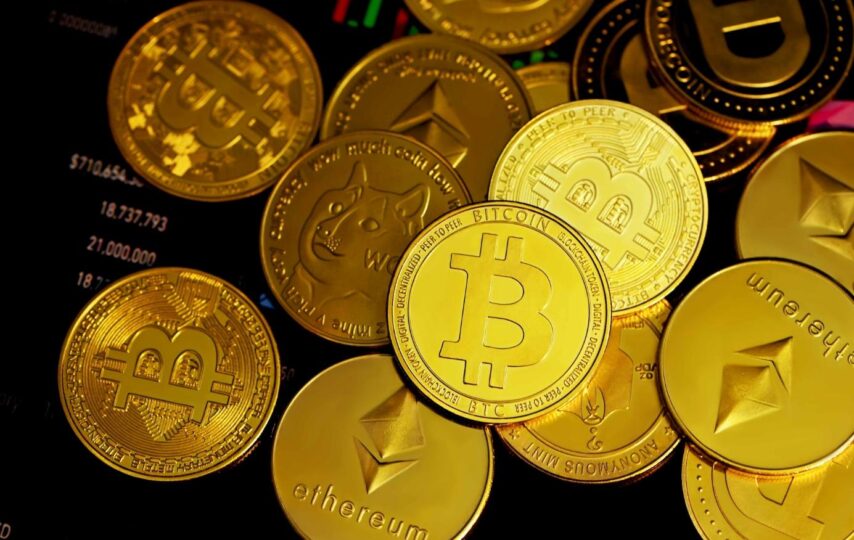In the traditional economy, economists monitor the circulation of money by keeping track of official denominations of money issuance. These numbers are very important as history has shown time and again that kings need money for wars. If there wasn’t enough money, more money was simply provided and circulated. The situation is very similar again today as a reaction to the rescue of banks or the many expenses in the course of a pandemic. Today, while governments oversee the increased money supply, increased money supply inevitably always leads to inflation – sometimes quite slowly and other times very quickly. The more money there is in circulation, the less it is worth and the higher the prices rise.
Until a few years ago, there was only one institution – the government-controlled central banks – that circulated new money to the people. Cryptocurrencies, as a decentralized entity, have changed that. This allows people to create their own microeconomies and have money at their disposal that is still worth something. Still, everyone needs the money to pay bills, buy food, or even distract themselves at an online casino with bonus in germany during their free time.
What exactly is a token?
Before delving further into the term tokenomics, let’s first look at what exactly a token is.
A token is a digital unit of cryptocurrency used as a specific asset or utility on the blockchain. While tokens have numerous uses, the most common uses are for security or regulation. Accordingly, they have their own value. For example, you can also consider a ticket to a concert as a token or at least compare it to it. This ticket has a certain value and can either be used to see the concert or exchanged for something else.
Blockchain tokens can be used in a number of different ways in sports betting. They can be used to bet on the outcome of sporting events, to buy and sell tickets to sporting events, and to trade in virtual currencies that are used to bet on sporting events. According to www.wettenbonus.net, Blockchain tokens can also be used to create and manage betting pools, and to track the results of bets.
Source – https://unsplash.com/photos/fxAo3DiMICI
Tokens can have many different uses within a network. A real boost for tokens only came when the Ethereum network was formed. Ethereum, unlike Bitcoin, offers people even more freedom of regulation. For example, Bitcoin can primarily only be used for transactions, but you can also develop your own apps on the Ethereum blockchain. To conduct a transaction on Ethereum, you need Ethereum tokens – similar to how you would pay a fee with money of some kind when sending money. This is how transactions are settled with tokens.
Two different types of tokens
Tokens can generally be broken down into two levels, each with a different purpose.
– Layer 1 token: A layer 1 token belongs to a specific blockchain and is used for its service. On the Ethereum network, this would be the Ether token.
– Layer 2 token: The layer 2 token is used for decentralized applications on a blockchain, as it works with the tokens of the Minds social network, for example.
However, tokens can also be used as security or as a supply. A security token is typically a form of investment. Utility tokens, on the other hand, are used to fund a network.
So what exactly are tokenomics?
The term tokenomics is made up of ‘token’ and ‘economics’. Consequently, the study of tokens to find out how they work, what their purpose is and what other factors need to be considered before investing is hidden here. Similar to economics, the value of a token can be affected by anything, including the token itself.
Tokenomics are still so new that there is no entry in any dictionary or encyclopedia on this topic. They can in turn be divided into four further sub-areas: distribution, price stability, mechanisms and regulation.
Token distribution
Token distribution refers to how a token can be earned or lost on a network. This includes the aspect of whether tokens are somehow limited in number. Bitcoin, for example, only has 21 million tokens, while Ethereum has an infinite number with no limit in the future. On the other hand, there are also models where tokens decrease over time. For example, a certain number of tokens are destroyed during a transaction, which in turn increases their value.
The distribution of tokens is also related to how many of the tokens are owned by the developers. Typically, the development team owns between 10% and 15% of the tokens.
Price stability
A token can get a more stable price if, for example, it is linked to another value (e.g. gold). For price stability, algorithms remove tokens from availability or add new ones until their price stabilizes.
Mechanisms
Mechanisms primarily include how a transaction is verified. There are various methods for this, such as the PoW (proof of work) for Bitcoin. However, this is very time-consuming and makes transactions more expensive. For a PoW, other participants in a network are used to verify them, who in turn receive some of the cryptocurrency in return.
Regulation
The core team behind each project determines how tokens are generated, entered into a network and can be withdrawn again. Each network has its own approach. Ripple holds tokens in a reserve to later add them to the network. This should accelerate growth and also offset maintenance costs.













